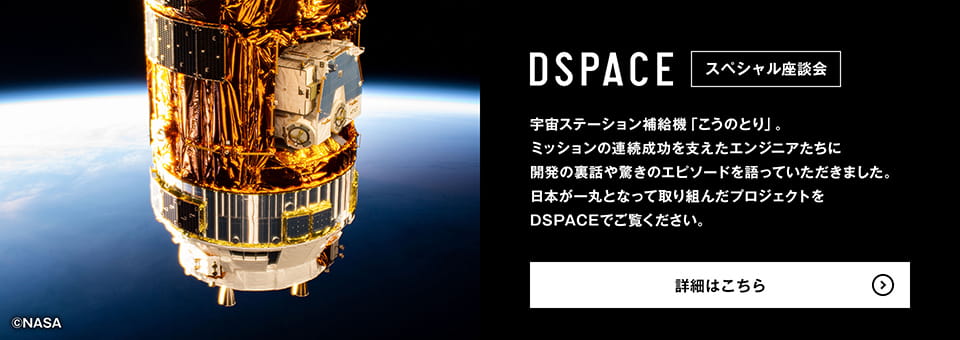1F | METoA 1
Welcome to the world of "HOPE FOR UNIVERSE".
At the entrance, welcoming you is an art object inspired by the image of a developer letting drift his thoughts for the sky.
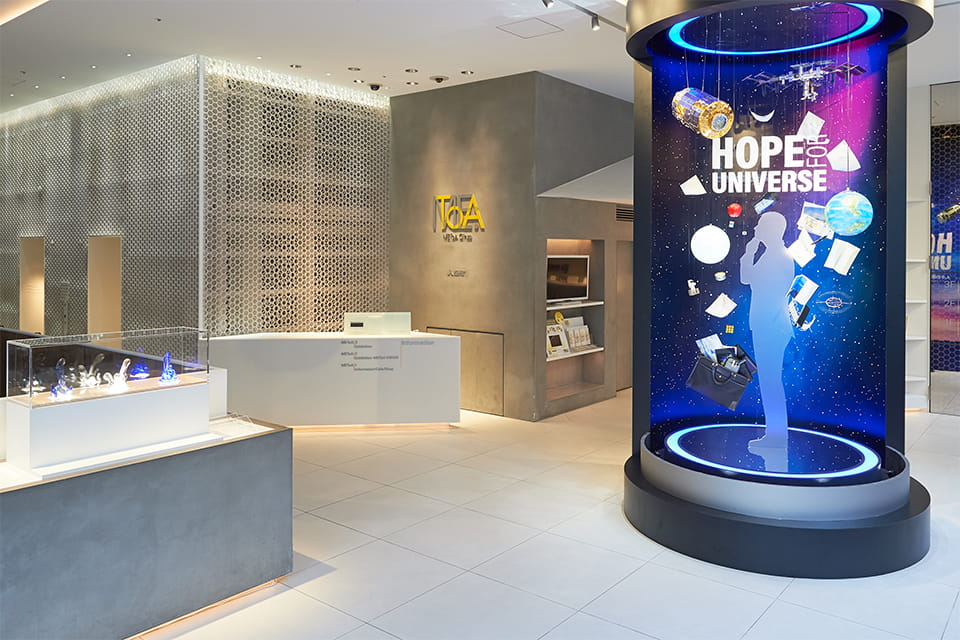
Sensitivity Lighting – Ikebana of Light
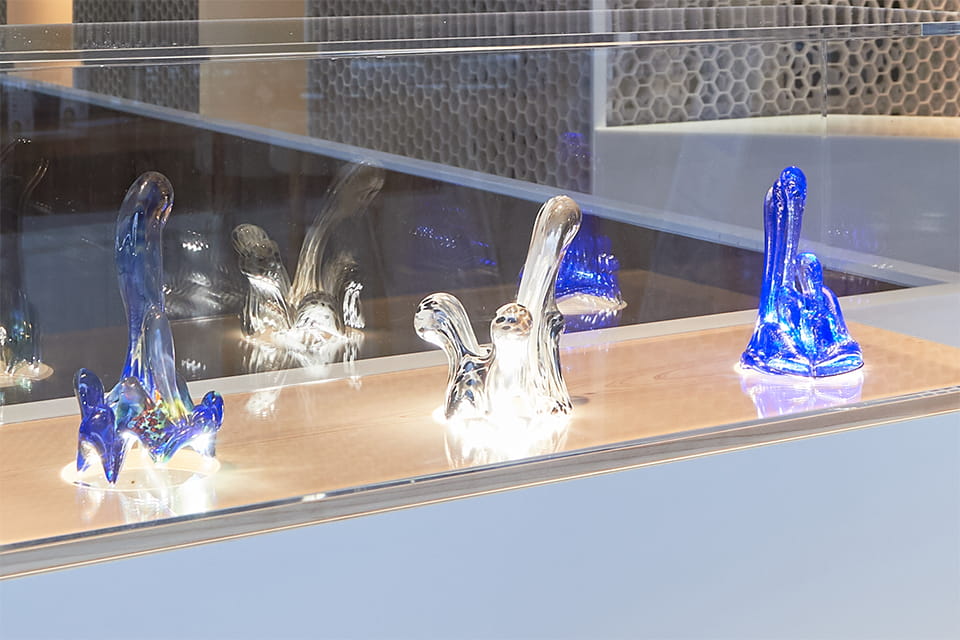
By combining glass refraction/reflection and Mitsubishi Electric' lighting technologies, Naoko Tosa, an artist and professor of Kyoto University, has expressed the "shimmering" of natural light, such as sunlight filtering through foliage and glittering on the water. Be sure to check out this healing light.
Ikebana of Light
This was inspired by the shape of sand bags hanging down used in the design of spires of Antoni Gaudi's work, the Sagrada Familia.
Glass heated at 800C° was placed over a copper mold, and then let hang down into a shape similar to "Sound of Ikebana"*. By combining lighting technologies with the glass artwork created in this way, Ikebana of Light was created.
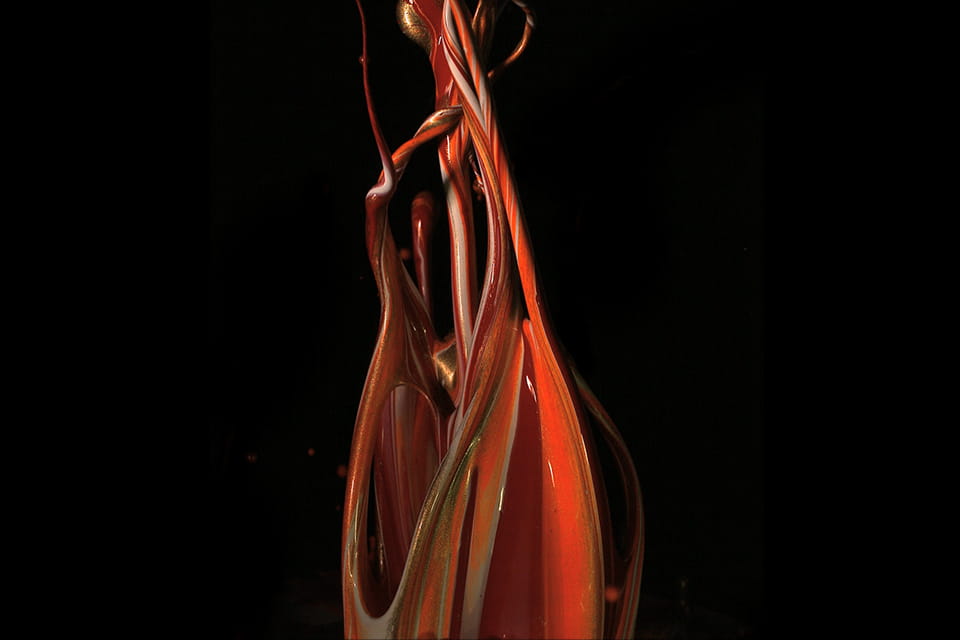
Sound of Ikebana
Ms. Naoko Tosa's work that transformed a shape created by the vibration of sound waves and fluid into an art form
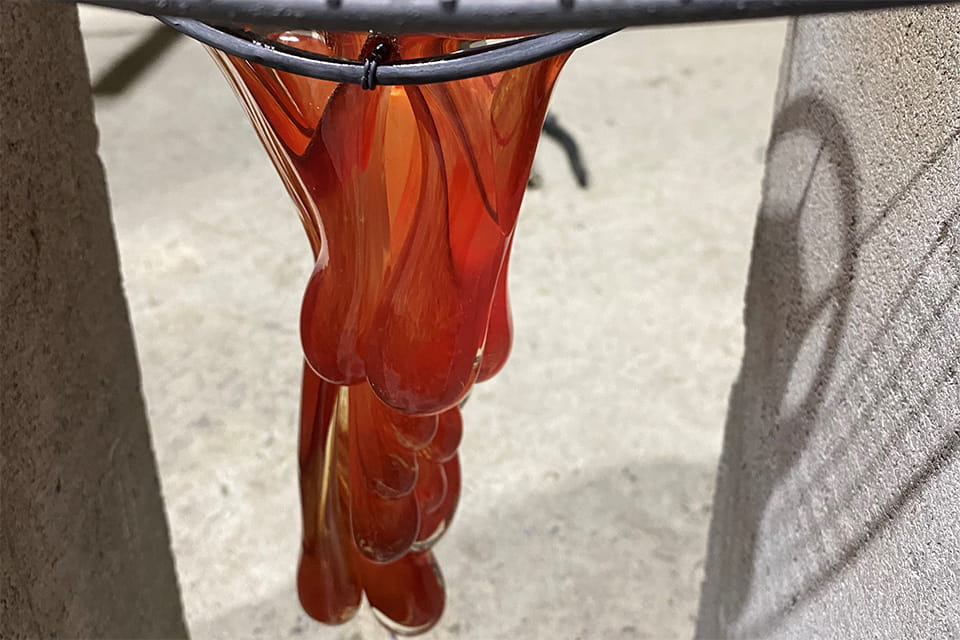
Creation of "Ikebana of Light"
Glass heated at 800°C placed over a copper mold and left to hang down by gravity



METoA Cafe & KitchenDuring your visit, please try our special event collaboration dish inspired by the theme, "HOPE FOR UNIVERSE"
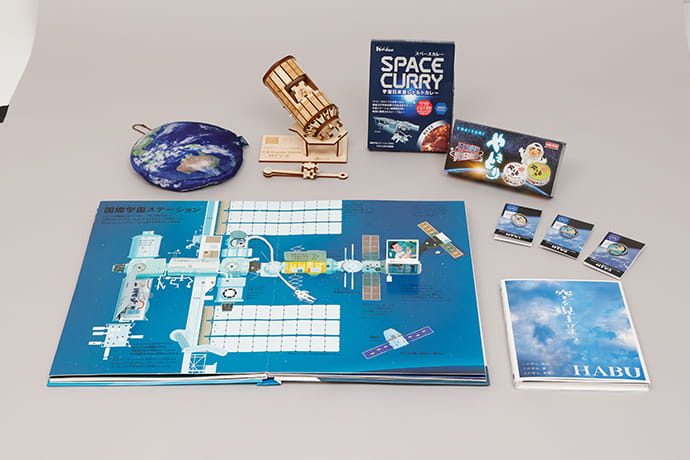
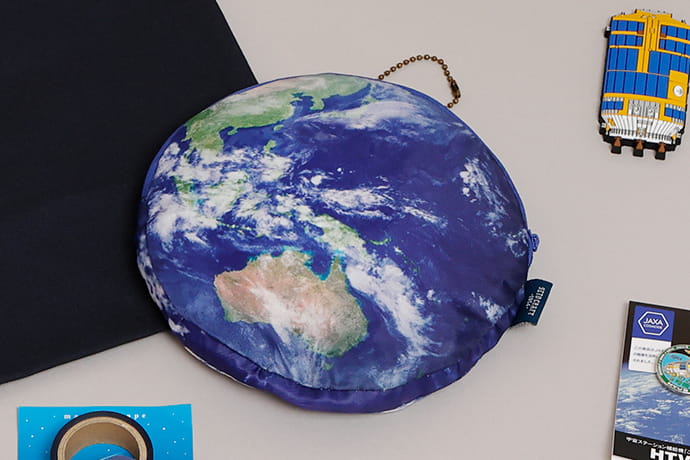

ShopWe have prepared goods suiting the theme of the current event.
2F | METoA 2
METoA VISION/HOPE FOR UNIVERSE
We invite you to a journey to outer space through powerful images on the giant screen and realistic sounds. We hope you enjoy the story of KOUNOTORI (HTV) in the universe that you can only experience here at METoA.
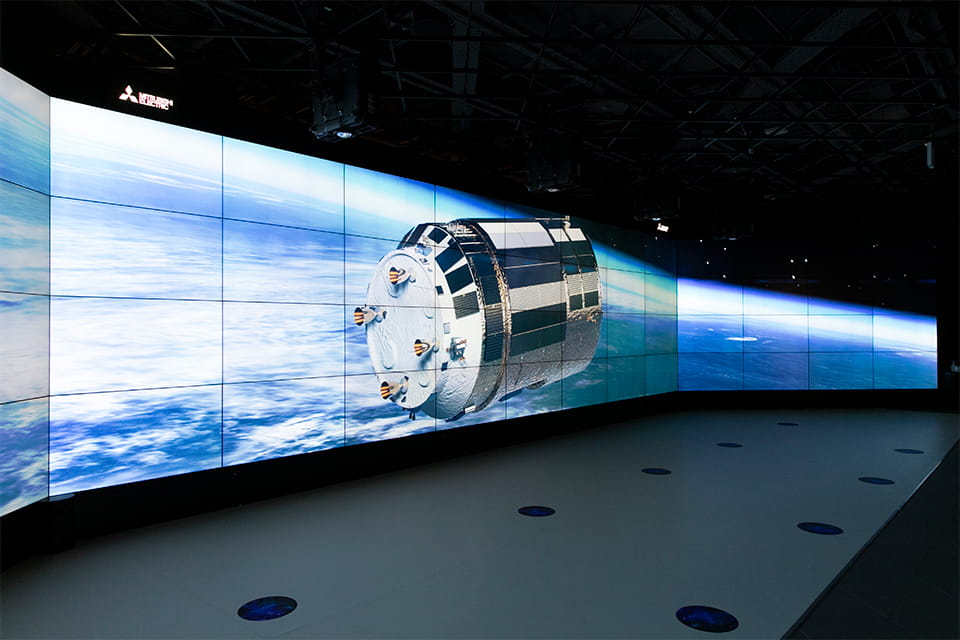
"KOUNOTORI" (HTV), Japan's first International Space Station (ISS) transfer vehicle – Behind its successful mission to deliver various supplies to the ISS was the passion for product manufacturing shown by the developers. Come with us on a journey to outer space and witness the drama of a challenge set in the vastness of the universe.
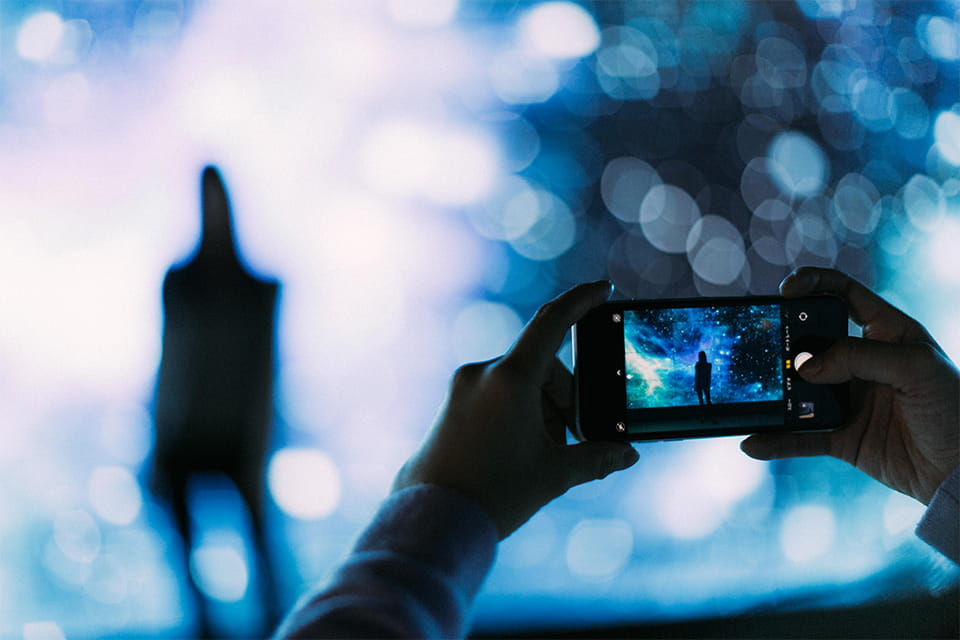
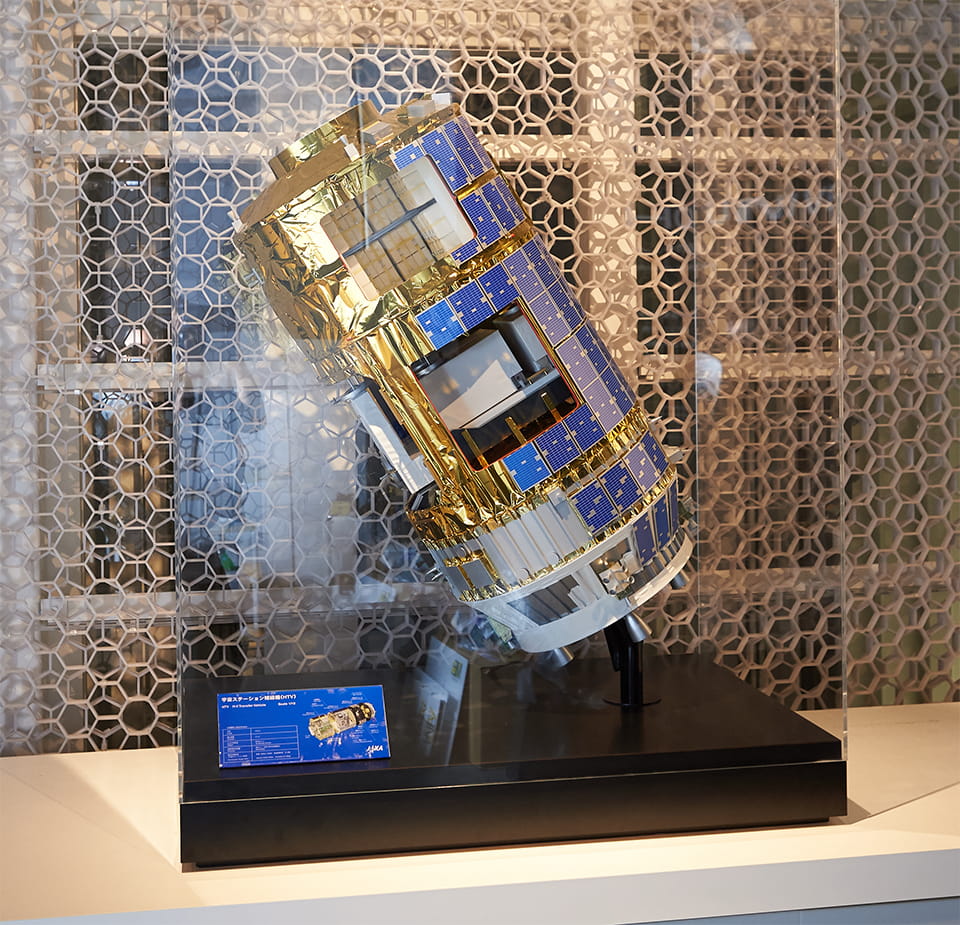
3F | METoA 3
Space Zone
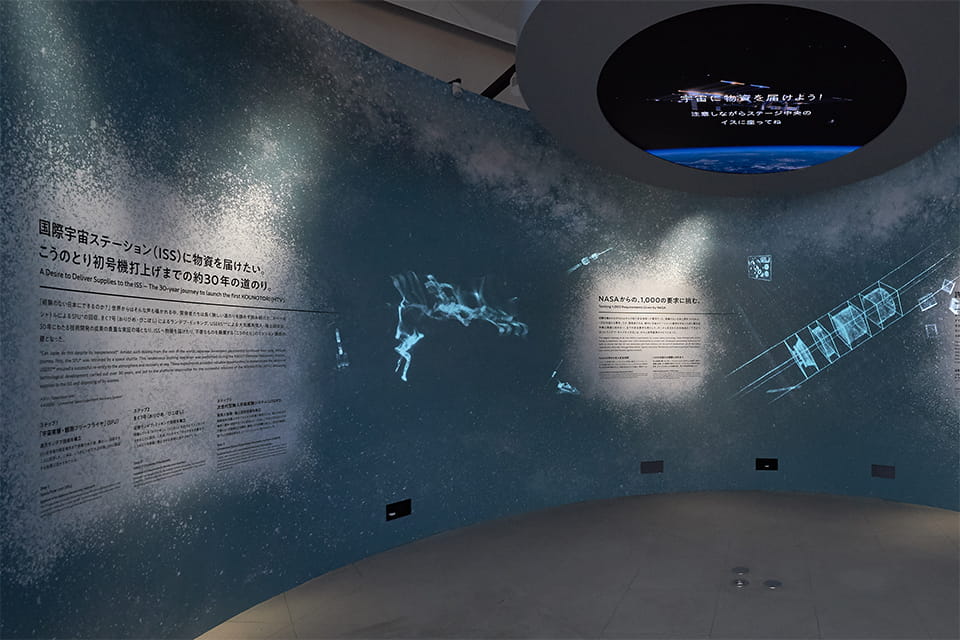
100% Mission Success Rate
‒ This is how Japan's first transfer vehicle came to be.
Tireless efforts of Team "KOUNOTORI" (HTV)* throughout a 30-year challenge
The KOUNOTORI (HTV) delivers supplies such as food and experimental equipment to the International Space Station (ISS).
There is a story of challenges experienced when developing this transfer vehicle, which completed nine consecutive missions without fail. It was a 30-year challenge for Team KOUNOTORI (HTV), consisting of repeated trial-and-error testing and hard work. Through this success, Japan's space technologies were proven to the world
*A number of companies, including Mitsubishi Electric and Mitsubishi Heavy Industries, participated in the KOUNOTORI (HTV) project. Mitsubishi Electric was responsible for developing the electric modules, the brain of the spacecraft, as well as the operations system installed at JAXA's Tsukuba Space Center.
Let's operate KOUNOTORI (HTV) projected on the ceiling with your body moves for a successful rendezvous/docking with the ISS. Can you accomplish the mission without a hitch?
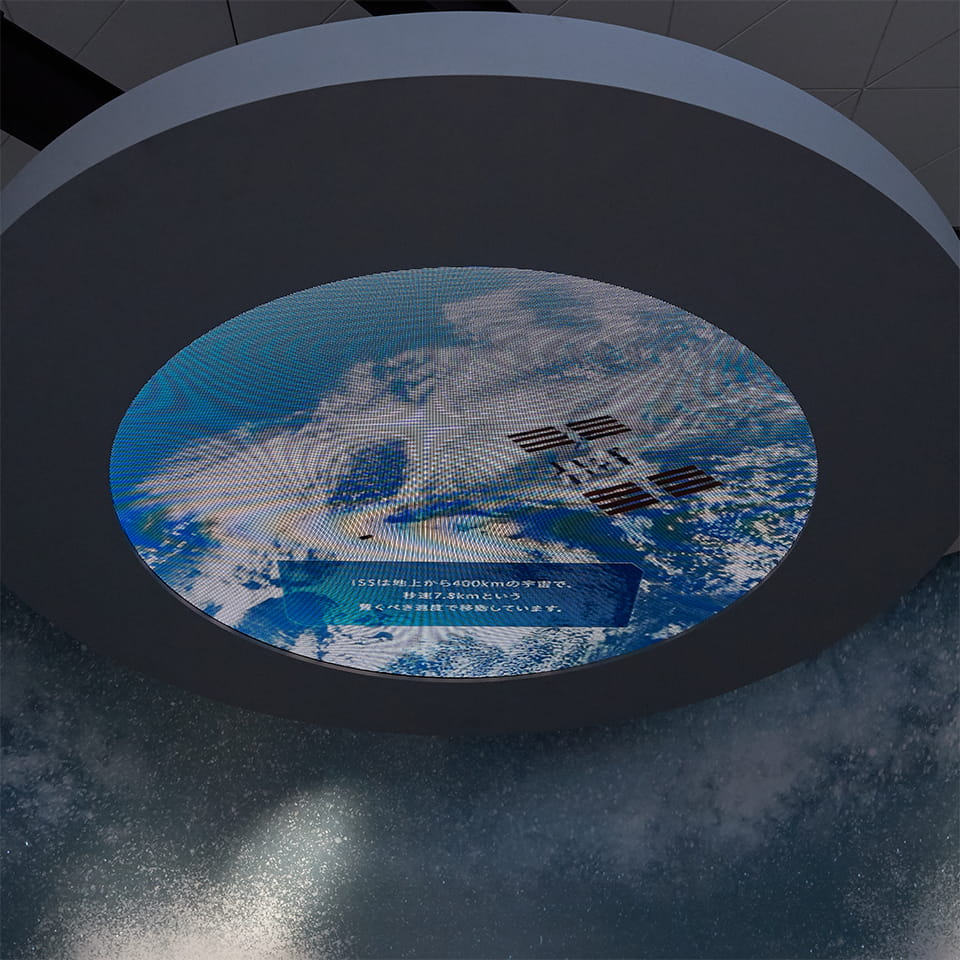
A Desire to Deliver Supplies to the ISS ‒
The 30-year journey to launch the first KOUNOTORI (HTV).
"Can Japan do this despite its inexperience?" Amidst such doubts from the rest of the world, Japanese developers persistently continued their long, difficult journey. First, the SFU* was retrieved by a space shuttle. This rendezvous docking operation was performed during the KIKU-7 (Orihime/Hikoboshi) mission. USERS** ensured a successful re-entry to the atmosphere and recovery at sea. These experiments provided valuable opportunities to demonstrate the results of technological development carried out over 30 years, and led to the platform responsible for the successful missions of the KOUNOTORI (HTV) delivering supplies to the ISS and disposing of its wastes.
*SFU:"Space Flyer Unit"
**USERS:"Unmanned Space Experiment Recovery System"
Step 1
Space Flyer Unit (SFU)
Establish a Far-distance Rendezvous Approach
The SFU was flown to a designated orbit and stand still above the Earth before it was successfully retrieved by a space shuttle. The technologies developed were utilized for the KOUNOTORI (HTV) to approach the ISS from a distance.
Step 2
KIKU-7 (Orihime/Hikoboshi)
Establish a Close-proximity Rendezvous Approach
Hikoboshi was brought close to the awaiting Orihime and docking was successfully completed. This technology was utilized to navigate the KOUNOTORI (HTV) close to the ISS and stop it at a position where it could be captured.
Step 3
Unmanned Space Experiment Recovery System (USERS)
Establishing Re-entry and Seaborne Recovery Technologies
Loaded with experimental specimens, a capsule re-entered the atmosphere before successfully splashing down in the ocean to be recovered. This technology was utilized to enable the entire body of the KOUNOTORI (HTV) to re-enter the atmosphere and fell to the designated marine area to complete its mission, while loaded with waste and unwanted goods from the ISS.
Tackling 1,000 Requirements Given
by NASA
The biggest challenge of all was NASA's requirements for human safety technology. Team KOUNOTORI (HTV), having no experience, was given over 1,000 requirements to comply with. Developers passionately worked on the tasks to ensure that the ISS was absolutely safe from collision. At the end of development, all of the safety requirements were met. Through these efforts, Japan's innovative "Rendezvous and Capture approach from below" was created, and later became a global standard.
Human Safety Technology Required by NASA
Even if one fault occurs, a normal approach to the ISS should be maintained. Even if two faults occur, no collision with the ISS should be allowed; these were NASA's requirements for human safety technology standards in a nutshell. It was a daunting task for Japan at the time.
Addressing More than 1,000 Issues
In order to fulfill the safety standards, Team KOUNOTORI (HTV) addressed more than 1,000 requirements stated by NASA, together with conducting several hundred other tasks. In order to solve those issues, over 2,500 operational procedures were drawn up. Undergoing over 100 tests, an effective human safety technology was established.
"First Mission Accomplished" -
Japan's Space Technology Recognized
by the World
Safety flight testing was carried out repeatedly for eight days before the first rendezvous and capture event finally took place. Developers breathlessly watched the KOUNOTORI (HTV) approach the ISS in close proximity. When the robot arm operated by an astronaut safely grabbed it, the control center was filled with joy. It was a historical moment when the view of the rest of the world dramatically changed towards Japan's space technology.
Unique Japanese Technology Rendezvous and Capture Method
With the ISS flying at the ultrahigh-speed of 7.8km/s, this technique brings the KOUNOTORI (HTV) up close to the ISS from below until they're flying side by side. After the KOUNOTORI (HTV) arrives at the designated position, an astronaut on the ISS uses a robot arm to capture it.
Enhanced Global Reputation and Trust
At this moment, the successful first mission won worldwide recognition of Japan's space technology. The rendezvous and capture approach demonstrated at the time would become a global standard.
No Failure Allowed -
Battle against Pressure
The developers felt relieved following the success of KOUNOTORI (HTV) No.9 completing all of its missions.
Until then, they had been battling against various pressures placed on them as the series of successes was being taken for granted. However, Team KOUNOTORI (HTV) grew as one as they went through the task of ensuring technologies were inherited to guarantee the stable quality of mass-produced products, as well as adopting new technologies. They had succeeded in overcoming the various pressures. Following the successful missions of all the mass-produced transfer vehicles, Japan had finally gained global trust for the stable quality of its products, much to the pride of the developers.
Challenge to Stabilize Product Quality
The "mass production" of spacecraft, from No.2 to No.9, proved to be a difficult task.
In order to achieve and maintain the high levels of quality required for mass production, Team KOUNOTORI(HTV) worked closely together throughout development.
Continued Success Supported Through Inheriting Technologies
Beginning from KOUNOTORI (HTV) No. 1, development of mass-produced transfer vehicles underwent generational changes over a 10-year period. For the continuous success of missions, the sharing of people's experiences after each generation played a key part, thereby avoiding excessive reliance on manuals and diagrams.
Let's Evolutionize Progress...
A New Space Station Transfer Vehicle - HTV-X
Taking advantage of the technologies developed during the KOUNOTORI (HTV) project, a further evolved transfer vehicle, the HTV-X, was delivered.It will be capable of carrying heavier payloads than the KOUNOTORI HTV did, as well as items that require power sources during transportation, such as freezers and experimental equipment. Furthermore, technologies demonstrated during HTV-X missions will be utilized in spacecraft designed for future probe missions to moons and planets.
"KOUNOTORI" (HTV)'s Success Triggers
New Technologies and Challenges
Probing Technology Taken to the Next Stage - High-Precision Moon Landing Achieved using SLIM
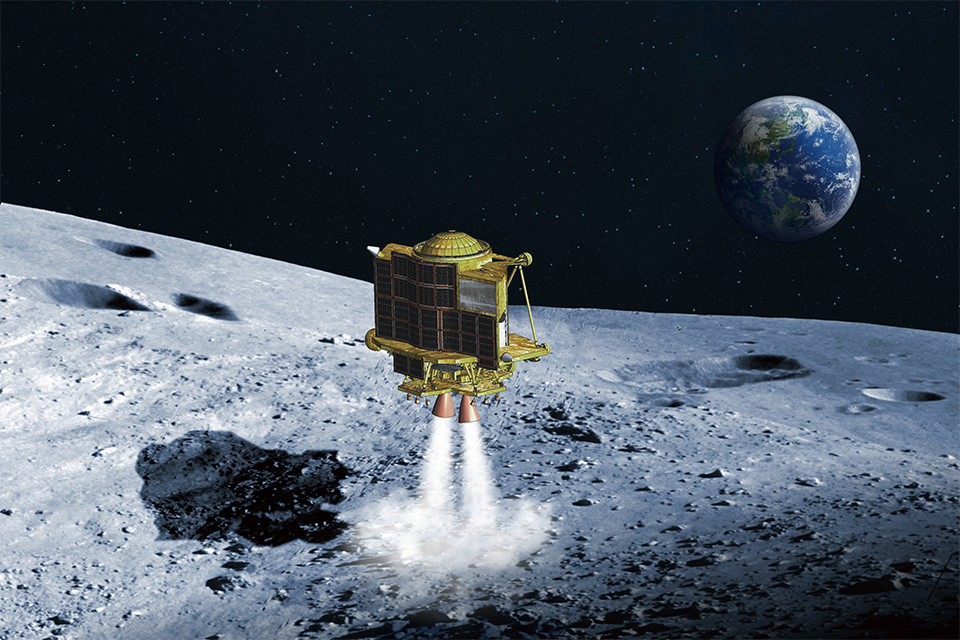
SLIM* is a prototype designed to make a pinpoint landing at a targeted location on a moon. One of its features is a smaller, lighter body.Mitsubishi Electric is responsible for system design, manufacturing the moon lander, and providing support for operations.
*SLIM: Smart Lander for Investigating Moon
Solve the Mystery of the Birth of Planets – Mission of Expectations using MMX
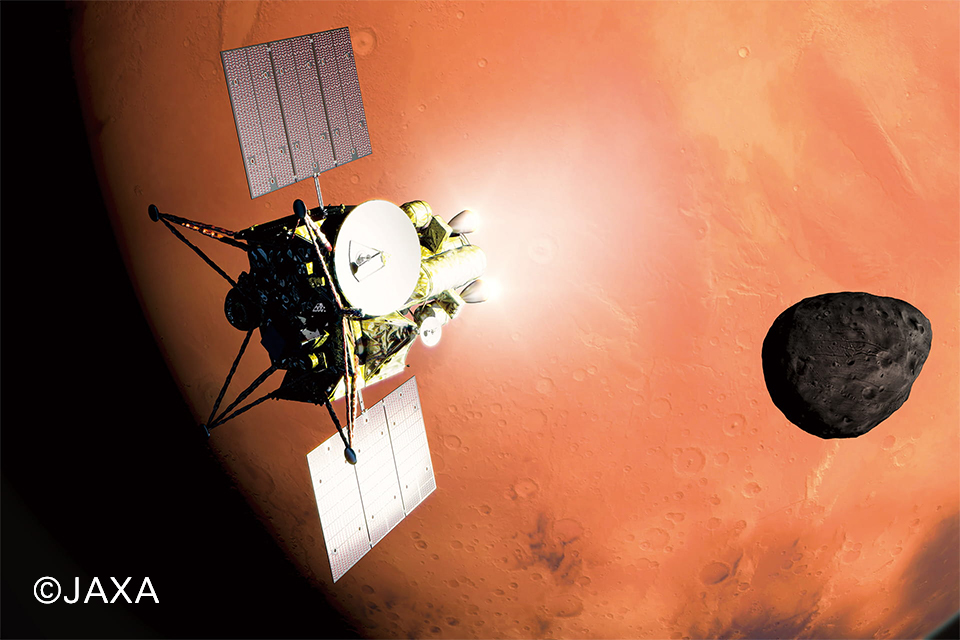
MMX* is a project to land on the moons of Mars, collect rocks and sand, and bring them back to Earth in 2029. Mitsubishi Electric is in charge of spacecraft systems design, manufacturing and technological support, from orbital operations through to return to Earth.
*MMX : Martian Moons eXploration
The Light of the Sky Zone
Light Up the Heart, Light of Healing
"Sensitivity Lighting"
The shimmering light of "Sensitivity Lighting" is created by combining glass refraction/reflection and lighting technologies. It is not light for illumination; it is a natural light with therapeutic effects, like sunlight filtering through foliage or sparkling light on the surface of water. We hope you will enjoy experiencing the potential of this light, jointly developed by Mitsubishi Electric and Kyoto University.
"Table of Light"
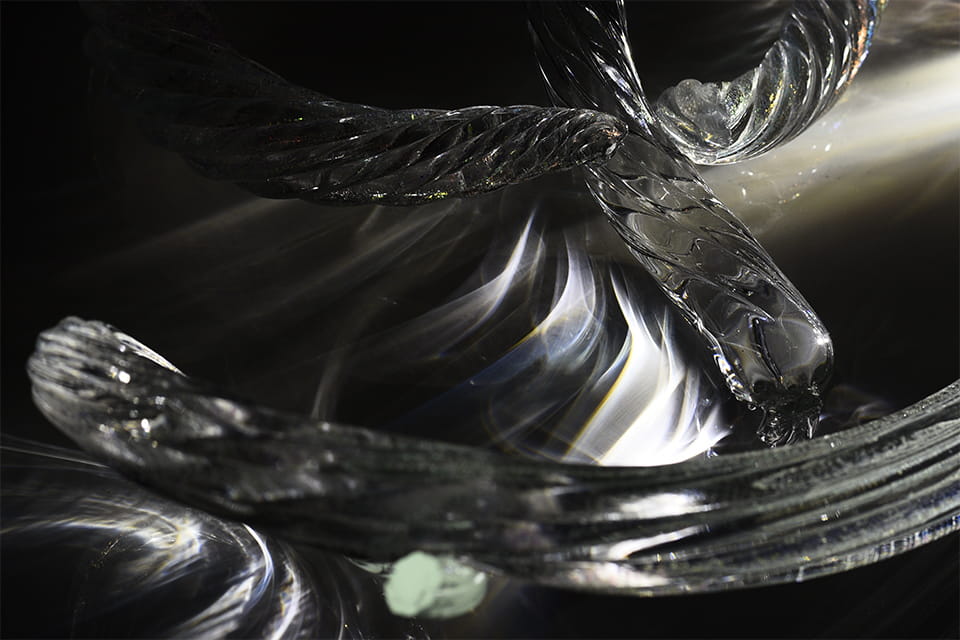
Shimmering Light Reaches Out to Sensitivity
Using an artistic glass object and Mitsubishi Electric lighting technologies, "shimmering natural light" is artificially produced.
Concept for "Table of Light"
In ancient times, people talked while sitting around a fire. Candles and bonfires also served as lighting. Through the "Table of Light", the shimmering shadows admired by Junichiro Tanizaki reach out to people's sensitivity. The fine combination of shadows and shimmering refracted light makes people feel comfortable. The colors of light, white, orange, and blue represent the Galaxy, Sun, and Earth, respectively. By looking at the soothing light in the table, a positive and peaceful dialog is ensured.
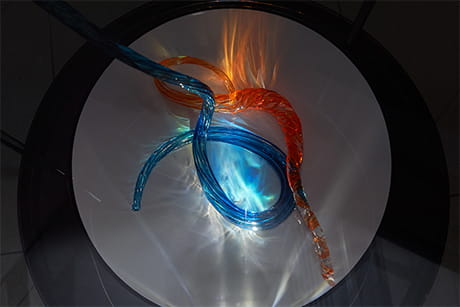
Desire to Create Lighting that
Offers Comfort
What gives people comfort?
That question led me to answer, "Natural light like 'sunlight filtering through foliage' or 'sparkling light on the surface of water'."
It inspired me to create lighting that represents “shimmering,” thereby introducing light that makes people feel comfortable.
–Muneharu Kuwata
Advanced Technology R&D Center Mitsubishi Electric Corporation
Challenge of Discovering the Behavior of the Light Admired
in "In Praise of Shadows"
Light is human wisdom. It originated from fire. At that time, fire was a new technology, which enabled food for be cooked and provided a focal point where people engaged in communication. In modern days, tables are integral to human communication. Used to resemble a fire, "Table of Light" has the behavior of shimmering light generated by shadows, creating a richer communication space.
–Naoko Tosa
Professor
Art Innovation Industry-Academia Joint Research Project
Graduate School of Advanced Integrated Studies in Human Survivability
Kyoto University
Lighting as a Survival Technology
Just as the quality of air, water and food are important, I think that quality of light will be important for humankind too. Therefore, it is very important to realize a quality of light that is capable of providing people comfort.
–Muneharu Kuwata
Advanced Technology R&D Center
Mitsubishi Electric Corporation
In the future, lighting will be a technology not only for providing light in dark places, but also for changing people's moods and lighting up their hearts.
–Naoko Tosa
Professor
Art Innovation Industry-Academia Joint Research Project
Graduate School of Advanced Integrated Studies in Human Survivability
Kyoto University
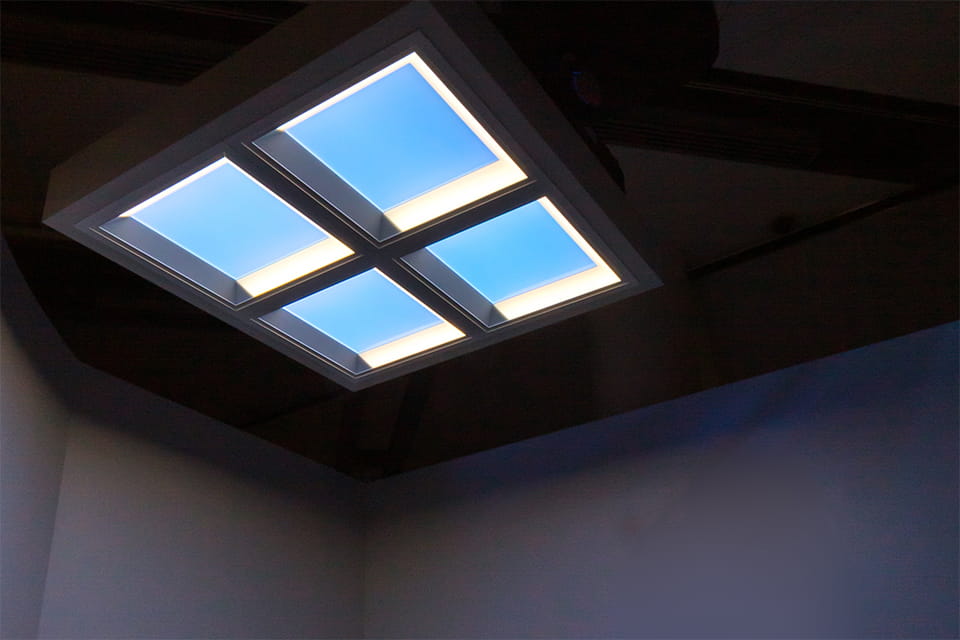
Light of the Sky Illuminating a Room
The Story of Creating "misola"
A panel replicating a three-dimensional blue sky and a uniquely structured frame that represents sunlight penetrating through. Along with these two components, misola's LED lighting replicates a blue sky using Rayleigh scattering. This natural blue sky was created as a result of the developers' passion and repeated trial-and-error. We hope you will enjoy experiencing "Nature's Blue Sky".
Psychological/Biological Effects of Lighting that Simulates Blue Sky on People
Studies were conducted on the effects of lighting that simulates blue sky has on people in a joint research project by Keio University and Mitsubishi Electric Advanced Technology R&D Center. The first impressions of the lighting environments were evaluated on a five-point rating scale using questionnaires."misola" performed better in psychological aspects such as "feel at peace", "calmed" and "relaxed". The results have proven that looking at misola can bring psychological relaxation.
“A desire to provide natural light for people
who spend much time in dark and
closed spaces”
The challenge to “reproduce natural light” stemmed from developer's aspirations to enriched people's lifestyles through light.The color of the sky is produced when sunlight hits the Earth's atmosphere and scatters.At that time, the blue in the sunlight spectrum is scattered more than the other colors. That is the color that reaches our eyes.
A desire to “provide people with the natural light of the sky wherever they are”...To over come the difficulties and achieve this, we performed repeated testing through trial and error.
We finally created a technology that faithfully replicates the sky.That is how “misola” was created. We hope that this “light of the sky” will continue to enlighten the hearts of many people.

